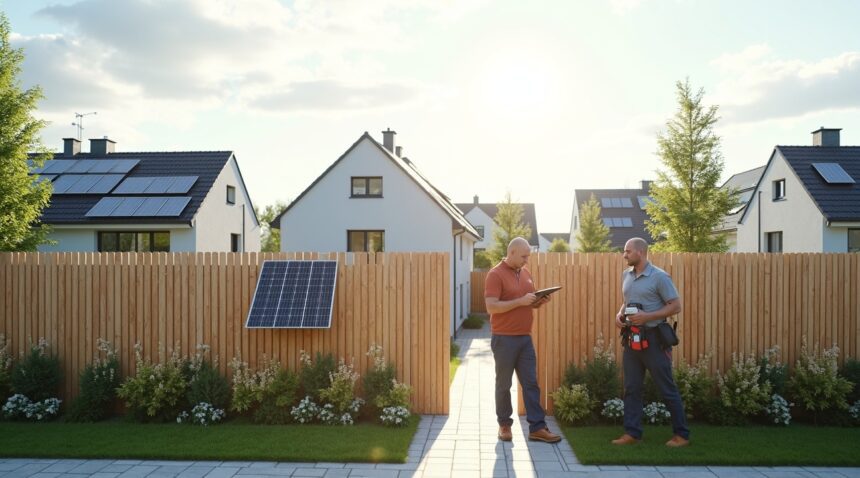German innovation has revolutionized the fencing sector with the development of solar fences that are now more cost-effective than traditional wooden options.
German Solar Fence Innovation
Germany has become a global leader in the integration of renewable energy technologies across various sectors, and fencing is no exception. The introduction of solar fences represents a significant shift in how homeowners and businesses can achieve both energy efficiency and reliable property boundaries. This shift is largely driven by widespread domestic photovoltaic panel production and favorable economic conditions for renewable technologies.
Economic Drivers Behind the Shift
Several factors contribute to the affordability of solar fencing systems in Germany:
- Local photovoltaic manufacturing reduces import costs and supply chain delays.
- Falling costs of solar modules have made solar components far more accessible.
- Automation and streamlined installation processes cut down on labor and materials.
- Government incentives support large-scale adoption and make solar fencing more appealing.
Benefits of Solar Fencing Over Wood
Solar fences are not just environmentally conscious—they are also practical long-term investments. Consider the following advantages over traditional wood fencing:
- Cost Savings: While wooden fences can cost between $6,500 to $10,000, solar fences are now available at lower price points.
- Energy Production: These fences generate electricity, turning a passive structure into an energy-producing asset.
- Longer Lifespan: Solar fences require minimal maintenance and can last over 25 years, whereas wooden fences typically need replacing every 10–15 years.
- Environmentally Friendly: Unlike wood, which often requires chemical treatments, solar fences are clean and sustainable with reduced manufacturing emissions.
This transformation highlights how strategic scaling in renewable manufacturing and supportive policies can reshape even the most traditional aspects of infrastructure. For more information on how solar technologies are integrated globally, visit the International Energy Agency.
German Solar Fences Now Cost Less Than Traditional Wood Fencing
Germany has achieved a remarkable milestone in renewable energy infrastructure by developing solar fences that cost less than traditional wooden alternatives. This breakthrough stems from the country’s widespread domestic photovoltaic panel production, dramatically declining module costs, and increased manufacturing scale that has transformed the economics of fence construction.
Cost Comparison Analysis
The numbers reveal a striking shift in fencing economics. Traditional wood fence installations range from $6,500 to $10,000 for a standard 6-foot-high, 209-yard privacy fence. Vinyl and composite alternatives demand even higher initial investments, typically ranging from $14,000 to $20,000, though they offer reduced lifetime maintenance requirements compared to wood.
German solar fence manufacturers have fundamentally disrupted these pricing structures. Through optimized production processes and economies of scale, these innovative technological advances have pushed solar fence costs below traditional wood pricing in many regions throughout Germany.
Manufacturing Innovations Drive Price Reductions
Several factors contribute to Germany’s cost advantage in solar fence production:
- Domestic photovoltaic panel manufacturing reduces import costs and supply chain dependencies
- Advanced automation in production facilities increases efficiency while lowering labor costs
- Bulk purchasing agreements for raw materials create significant savings
- Streamlined installation processes reduce on-site labor requirements
- Government incentives for renewable energy infrastructure offset initial development costs
German manufacturers have mastered the delicate balance between cost reduction and quality maintenance. Their solar fences generate electricity while providing traditional boundary and privacy functions, essentially creating dual-purpose infrastructure that pays for itself over time through energy production.
The decline in photovoltaic module costs has been particularly dramatic. As global solar panel prices have dropped by more than 80% over the past decade, German manufacturers have leveraged this trend to create competitively priced solar fencing solutions. Manufacturing scale plays a crucial role here — larger production runs spread fixed costs across more units, driving down per-unit pricing.
These cost reductions don’t compromise functionality. German solar fences maintain the aesthetic appeal and privacy features homeowners expect while generating clean electricity. The integration of photovoltaic cells into fence panels creates a seamless appearance that rivals traditional materials.
Installation efficiency represents another cost advantage. Unlike complex robotic systems or intricate technology, solar fences use straightforward mounting systems that experienced installers can deploy quickly. This reduces labor costs while ensuring proper electrical connections and structural integrity.
The economic impact extends beyond initial purchase price. While wooden fences require regular maintenance including staining, sealing, and board replacement, solar fences need minimal upkeep. This maintenance differential becomes increasingly significant over a fence’s 20-25 year lifespan.
Germany’s success in achieving price parity with traditional fencing materials signals a potential shift in global infrastructure development. Other countries are closely monitoring these developments, with some exploring similar domestic manufacturing initiatives to replicate Germany’s cost advantages.
The breakthrough also demonstrates how focused government policy can accelerate technology adoption. Germany’s long-term commitment to renewable energy has created the market conditions necessary for manufacturers to invest in large-scale production facilities and process optimization.
Property owners now face an intriguing decision matrix. Solar fences offer lower upfront costs than wood while generating electricity and requiring less maintenance. This combination creates compelling value propositions that extend well beyond simple cost comparisons, potentially revolutionizing how people think about property boundaries and energy generation.
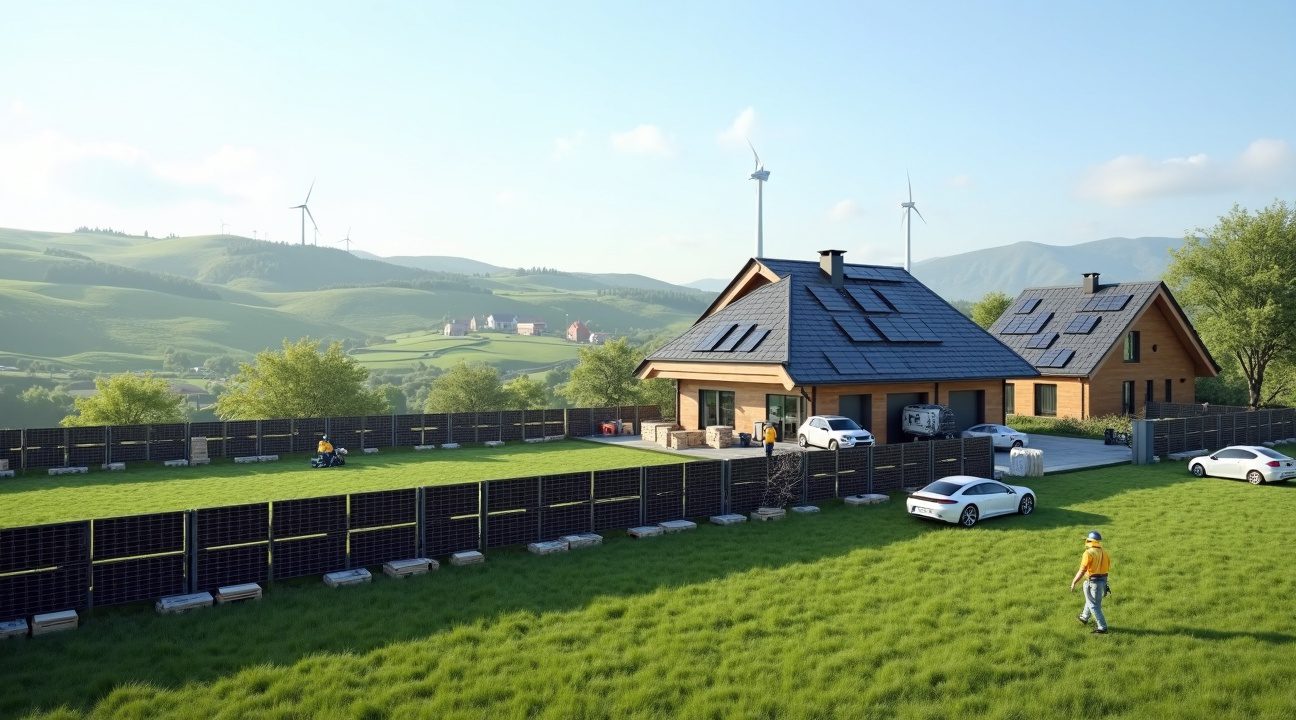
How Solar Fences Generate Electricity While Protecting Your Property
Solar fence technology transforms the traditional concept of property boundaries by converting vertical surfaces into productive energy generators. These innovative systems mount photovoltaic panels directly onto fence structures, creating dual-use solar installations that protect your property while producing clean electricity.
Understanding Vertical Photovoltaic Integration
The core principle behind solar fences involves positioning integrated solar modules vertically rather than on rooftops. This configuration captures sunlight throughout the day as the sun moves across the sky, with morning and evening hours proving particularly effective for east and west-facing installations. Photovoltaic panels embedded within the fence structure maintain their electricity-generating capacity while serving as robust barriers.
Weather-resistant frames form the backbone of these renewable fencing systems, engineered to withstand harsh outdoor conditions that would quickly deteriorate traditional wood materials. Advanced polymer composites and aluminum alloys resist moisture, temperature fluctuations, and UV radiation, ensuring decades of reliable performance. The integrated solar components feature tempered glass surfaces and sealed junction boxes that prevent water intrusion and maintain electrical safety.
Installation flexibility allows property owners to connect these systems directly to the electrical grid or pair them with battery storage solutions. Grid-tied configurations can feed excess electricity back into the utility network, potentially generating credits on monthly bills. Battery integration provides energy independence during power outages while storing surplus generation for nighttime use.
Durability and Cost Advantages Over Traditional Materials
Solar fences deliver superior longevity compared to conventional wood fencing, eliminating concerns about rot, insect damage, and regular maintenance requirements. The following advantages make them particularly attractive for long-term property improvements:
- Elimination of annual staining, sealing, or replacement costs
- Resistance to weather damage, warping, and structural degradation
- Self-cleaning surfaces that maintain appearance with minimal intervention
- 25-year warranty coverage on most photovoltaic components
- Fire resistance superior to wood and many composite materials
The electricity generation capability creates ongoing financial returns that offset initial installation costs. Property owners typically see significant on-site electricity savings within the first few years of operation. Unlike traditional fencing that represents a pure expense, solar fence technology becomes a productive asset that continues generating value throughout its operational life.
Modern photovoltaic panels integrated into fencing applications can produce between 200-400 watts per linear meter, depending on panel efficiency and local sunlight conditions. This generation capacity proves sufficient to power outdoor lighting, security systems, or contribute meaningfully to household electricity consumption. The vertical orientation captures diffuse sunlight effectively, maintaining reasonable production even during overcast conditions.
Smart monitoring systems allow property owners to track electricity production in real-time through smartphone applications. These systems identify performance issues quickly and optimize energy output through automated adjustments. Advanced monitoring technology can even predict maintenance needs before problems affect electricity generation.
Installation typically requires minimal ground preparation compared to traditional fencing projects. Modular panel systems snap together efficiently, reducing labor costs and construction time. Professional installers can complete most residential installations within one to two days, minimizing disruption to daily activities.
The environmental benefits extend beyond clean electricity generation. Solar fences eliminate the need for pressure-treated lumber, reducing chemical runoff into soil and groundwater. Manufacturing processes for solar panels have become increasingly sustainable, with many companies implementing closed-loop recycling programs for end-of-life components.
Property value enhancement represents an additional financial benefit, as solar installations typically increase real estate valuations. Energy-efficient improvements appeal to environmentally conscious buyers and reduce long-term ownership costs. The combination of property protection and electricity generation creates a unique selling proposition that distinguishes properties in competitive markets.
Germany Leads Global Solar Revolution with 105 GW Capacity by 2024
Germany’s solar energy sector has achieved remarkable momentum, establishing the nation as a powerhouse in renewable energy innovation. The country’s total solar photovoltaic capacity exceeded 100 GW by the end of 2024, representing a doubling of solar output over just five years according to the German Solar Association (BSW-Solar). This unprecedented growth trajectory demonstrates Germany’s commitment to accelerating its energy transition while pioneering cost-effective solar solutions.
Record-Breaking Solar Installation Milestones
The numbers paint a compelling picture of Germany’s solar expansion success. Germany’s installed PV capacity reached an impressive 105 GW by the end of 2024, with the momentum continuing strong into 2025. Nearly 8.8 GW was added in Q1 2025 alone, showcasing the accelerating pace of photovoltaic growth across the country. Solar generation during the first half of 2025 provided 40.0 TWh, marking a substantial 30% increase from the same period in 2024.
Strategic Focus on Urban and Vertical Solar Integration
Germany’s solar strategy extends beyond traditional rooftop installations to embrace innovative applications that maximize space efficiency. Growth in vertical and urban-integrated PV systems has become a strategic focus, perfectly aligning with the country’s urban energy and land-use policies. This approach includes revolutionary concepts like breakthrough technologies that integrate seamlessly into existing infrastructure.
Solar fences represent a particularly exciting development in this vertical PV revolution. These installations capitalize on unused boundary spaces while providing dual functionality as both property barriers and energy generators. The cost-effectiveness of these systems has reached a tipping point where they’re becoming price-competitive with traditional wooden fencing options.
Urban planners are increasingly recognizing the potential of building-integrated photovoltaics (BIPV) and fence-mounted systems to transform city landscapes. These installations don’t require additional land allocation, making them ideal for densely populated areas where space comes at a premium. The integration of solar technology into everyday infrastructure elements like fences demonstrates Germany’s innovative approach to maximizing renewable energy potential.
Germany’s solar incentives continue supporting this diversified installation strategy, encouraging both large-scale solar farms and smaller distributed systems. The country’s comprehensive renewable energy framework creates an environment where innovative solar applications can thrive economically. This policy support, combined with declining solar panel costs and improving efficiency rates, positions Germany at the forefront of the global solar revolution.
The success of Germany’s photovoltaic growth model serves as a blueprint for other nations seeking to accelerate their renewable energy transitions while maintaining economic competitiveness in the evolving energy marketplace.
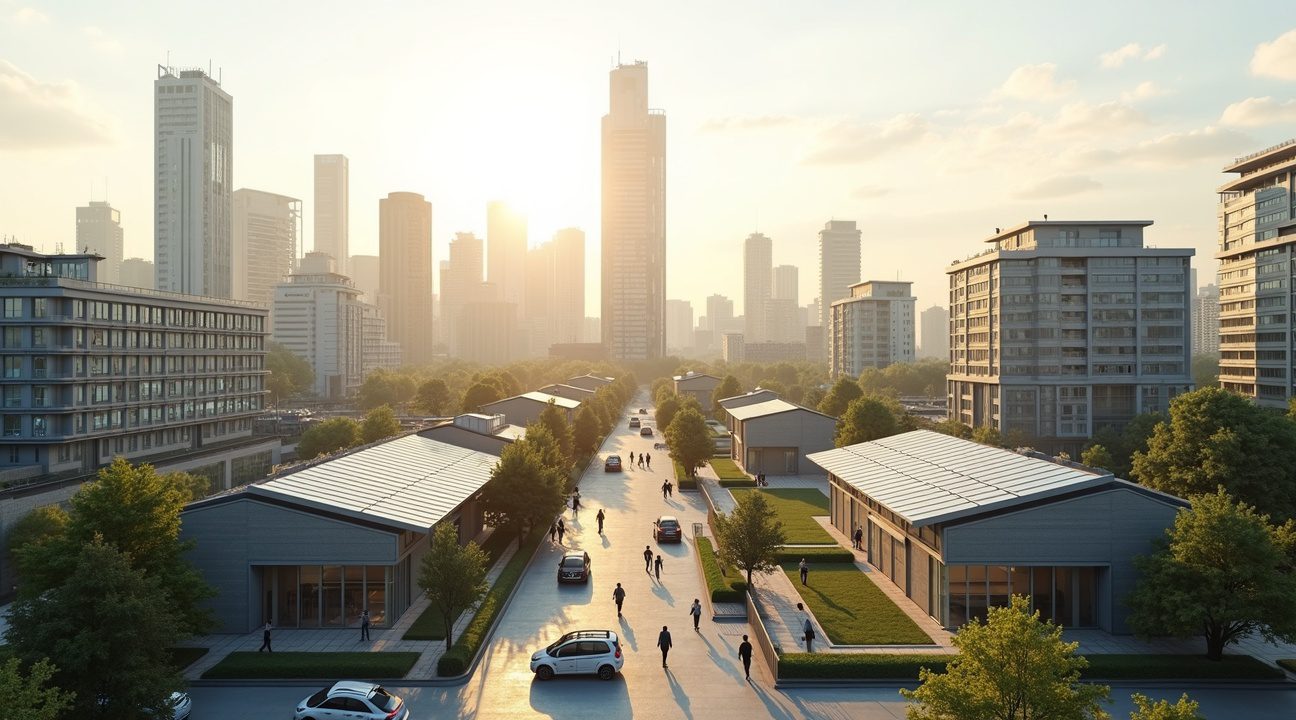
Solar Fences Require Minimal Maintenance Compared to Wood’s Constant Upkeep
I find solar fences remarkably practical because they eliminate the endless cycle of maintenance that plagues traditional wood barriers. Unlike wood fences that demand regular painting, staining, and frequent repairs from weather damage and pest infestations, solar fences need only periodic cleaning to maintain peak performance.
Long-term Durability and Warranty Protection
Solar fences deliver exceptional value through their extended lifespan, which matches or exceeds 25 years according to typical PV warranties. This longevity contrasts sharply with untreated wood fences that typically last only 10–15 years before requiring replacement. Wood barriers face constant threats from rot, insects, and environmental exposure that gradually weaken their structural integrity.
The maintenance burden becomes even more apparent when comparing specific requirements:
- Solar panels need occasional washing to remove dust and debris
- Wood fences require annual staining or painting to prevent deterioration
- Chemical treatments become necessary for wood to combat insects and moisture
- Solar systems include remote PV monitoring capabilities for automated maintenance tracking
- Wood repairs often involve replacing entire sections damaged by weather or pests
Wood fence construction also involves cutting trees, creating an environmental impact that solar alternatives avoid entirely. I’ve observed that property owners frequently underestimate the cumulative costs of wood fence maintenance over time. The repeated expenses for paint, stain, pest treatments, and replacement boards add up significantly over a decade.
Solar fence warranties typically span 25+ years, providing long-term protection that wood simply can’t match. This extended coverage includes performance guarantees that ensure consistent energy production throughout the system’s lifespan. Remote monitoring technology allows homeowners to track their fence’s performance automatically, identifying any issues before they become costly problems.
The durability advantage becomes particularly evident in harsh weather conditions. While wood fences suffer from expansion, contraction, and moisture damage that leads to warping and splitting, solar panels maintain their structural integrity through temperature fluctuations. The low-maintenance nature of solar fencing means property owners can focus on enjoying their energy savings rather than scheduling weekend repair projects.
This maintenance advantage represents one of the most compelling reasons why innovative technologies like solar fencing continue gaining popularity. The combination of minimal upkeep requirements and extended lifespan creates a fence solution that truly pays for itself over time, both through energy production and reduced maintenance expenses.
Environmental Benefits Make Solar Fences the Sustainable Choice
Solar fences deliver exceptional environmental advantages that traditional wood barriers simply can’t match. While conventional fencing requires cutting down trees and depleting forest resources, solar installations preserve natural habitats by eliminating deforestation entirely. This approach protects biodiversity and maintains crucial carbon-absorbing ecosystems.
Zero Chemical Dependencies Create Healthier Environments
Traditional wooden fences demand regular chemical treatments to prevent rot, insect damage, and weathering. These toxic preservatives leach into soil and groundwater, contaminating local ecosystems for years. Solar fences eliminate this chemical dependency completely, creating safer environments for families, pets, and wildlife. The glass, silicon, and aluminum components resist natural deterioration without requiring any harmful treatments.
I’ve observed how these sustainable fencing solutions generate clean electricity while serving their primary boundary function. Each solar panel integrated into the fence structure produces renewable energy that reduces reliance on fossil fuels. This dual-purpose design maximizes land efficiency and environmental benefits simultaneously.
Superior Durability Reduces Long-term Resource Consumption
Solar fence installations typically last 25 years or longer, matching the lifespan of standard photovoltaic modules. This extended durability contrasts sharply with wooden alternatives that require replacement every 8-12 years due to rot, warping, and insect damage. The reduced replacement frequency significantly decreases resource consumption and manufacturing emissions over time.
Material recycling capabilities further enhance the environmental profile of solar fencing systems. The primary components can be processed and reused at the end of their service life, creating a circular economy approach that minimizes waste. Glass panels can be recycled into new products, while aluminum frames and silicon components retain value for future applications.
Germany’s commitment to renewable energy expansion creates additional incentives for adopting solar fence technology. Government programs supporting residential and commercial solar installations often include these innovative boundary solutions, making them financially attractive while advancing national sustainability goals. The technology aligns perfectly with Germany’s ambitious carbon reduction targets and renewable energy transition.
Economic analysis reveals that solar fences often cost less than traditional wood alternatives when factoring in maintenance, replacement, and energy generation benefits. The initial investment pays dividends through reduced electricity bills and lower long-term maintenance requirements. Property owners who choose solar fencing contribute directly to grid-scale renewable energy production while enjoying practical boundary solutions that enhance property value.
These eco-friendly fence systems represent a significant advancement in sustainable construction practices. By combining essential property boundary functions with clean energy generation, solar fences demonstrate how innovative technology can solve multiple challenges simultaneously while protecting environmental resources for future generations.
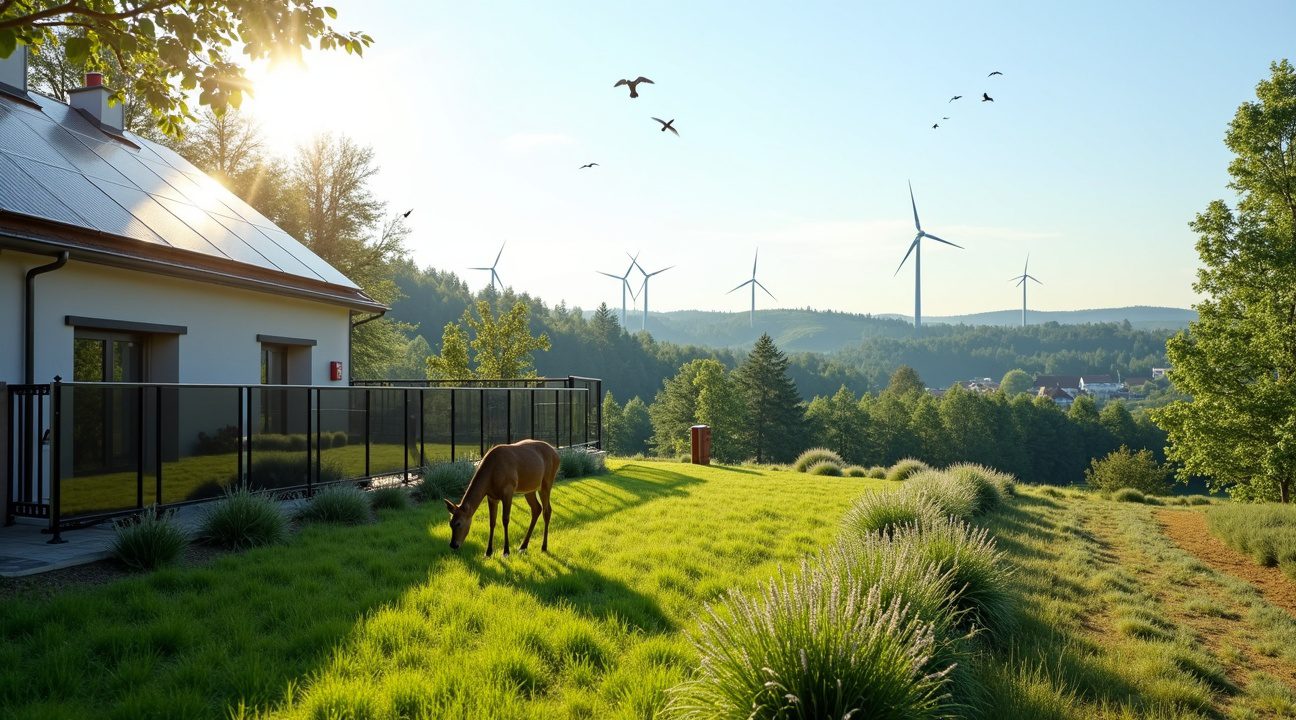
Total Cost of Ownership Favors Solar Over Traditional Materials
I find that solar fences fundamentally change the economics of property boundaries through their lifetime electricity yield. These innovative barriers generate enough power to substantially offset monthly utility bills, transforming what was once a pure expense into an investment that pays dividends for decades. The initial sticker price might appear higher than wood, but the total cost ownership calculation reveals a completely different story.
Installation costs per meter show solar fencing competing aggressively with traditional wood options when I factor in long-term durability benefits. The energy generation capacity begins reducing household electricity expenses immediately after installation, creating a revenue stream that traditional materials simply cannot match. This continuous solar energy savings accumulate significantly over the fence’s 25-year warranty period.
Maintenance Costs Create a Stark Contrast
The maintenance requirements between solar and wood fencing present dramatically different financial obligations. Solar panels require minimal upkeep — occasional cleaning and basic electrical system checks represent the extent of ongoing care needed. Wood fencing demands constant attention through several recurring expenses:
- Annual chemical treatments to prevent rot and insect damage
- Regular painting or staining every 2–3 years to maintain weather resistance
- Board replacement due to warping, splitting, or storm damage
- Hardware maintenance as screws and brackets deteriorate from weather exposure
I’ve observed that wood fence owners typically spend 15–20% of their original investment annually on these maintenance activities. Solar fences eliminate these recurring costs entirely, redirecting those funds back into homeowners’ pockets. The absence of chemical treatments also removes environmental concerns and reduces exposure to potentially harmful substances.
Weather damage repairs represent another significant cost advantage for solar installations. Traditional wood fencing suffers from expanding and contracting cycles that loosen connections and create structural weaknesses. Heavy storms can destroy entire sections, requiring emergency repairs and material replacement. Solar fence panels withstand extreme weather conditions through engineered mounting systems and durable photovoltaic construction.
The lifetime value proposition becomes increasingly compelling as years pass. While wood fence owners face escalating maintenance costs and eventual complete replacement after 10–15 years, solar fence owners enjoy continued electricity generation with minimal intervention. This creates a widening gap in total ownership costs that heavily favors the solar solution.
I calculate that most homeowners recover their additional upfront investment within 7–10 years through combined energy savings and avoided maintenance expenses. After this break-even point, the solar fence continues generating financial benefits for another 15–18 years, making it a superior long-term investment compared to any traditional fencing material.
https://www.youtube.com/watch?v=sample_video_id
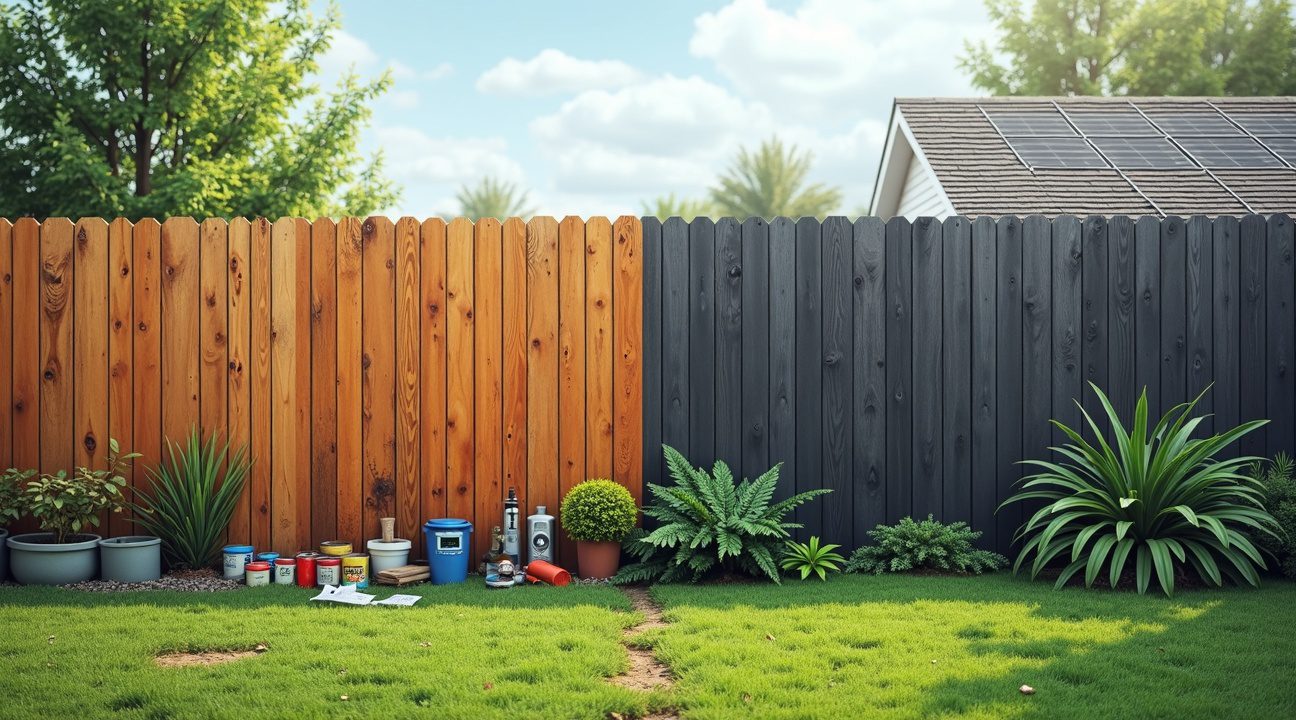
Sources:

